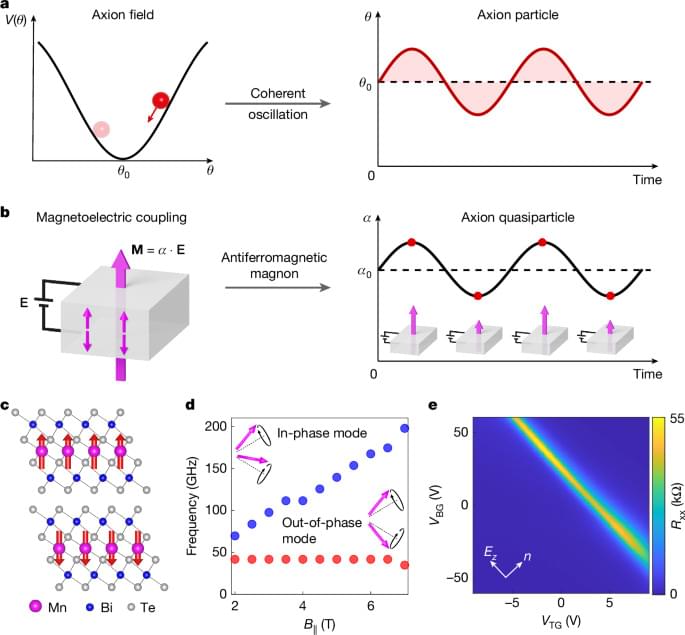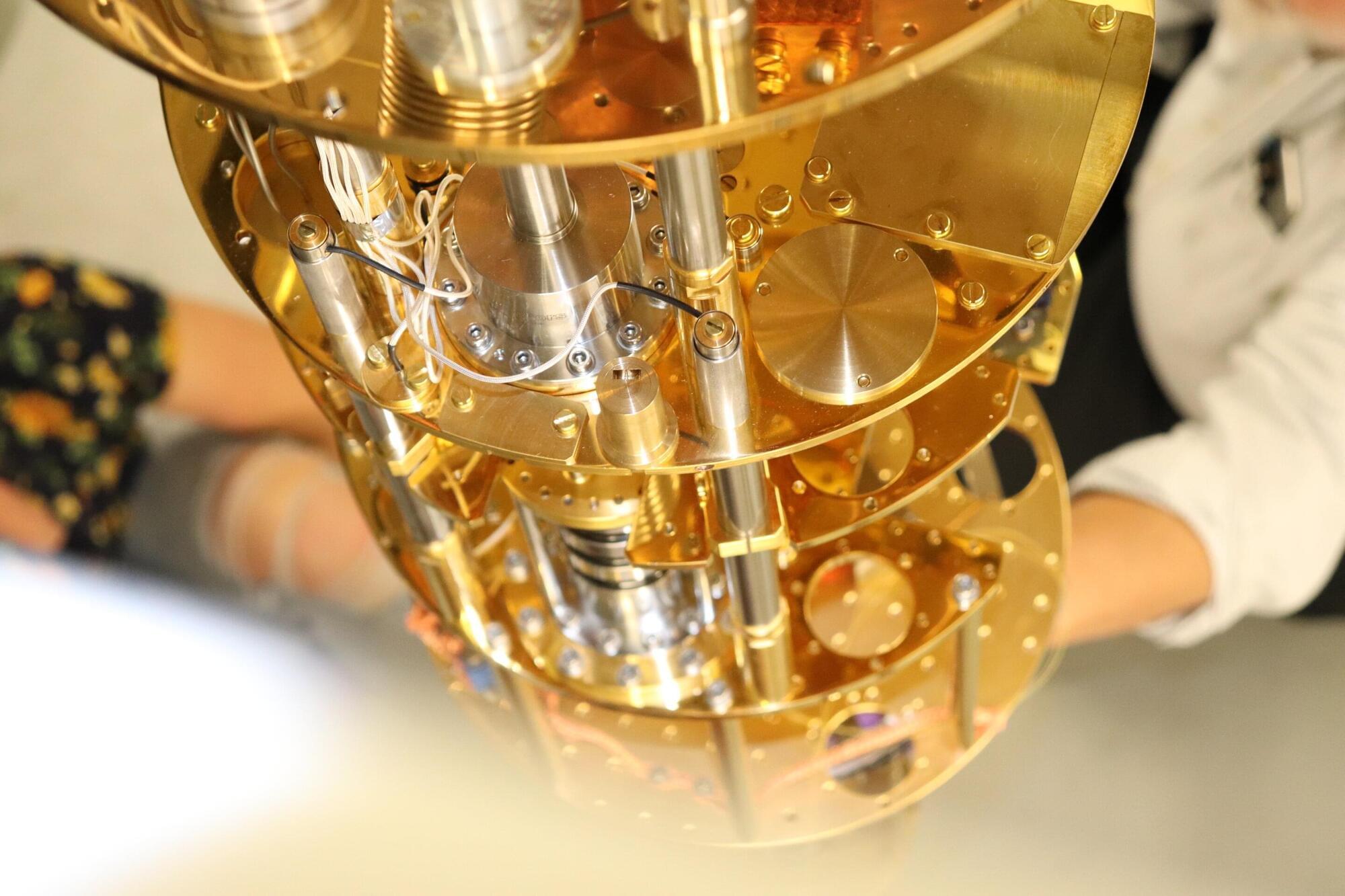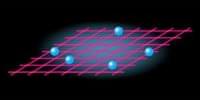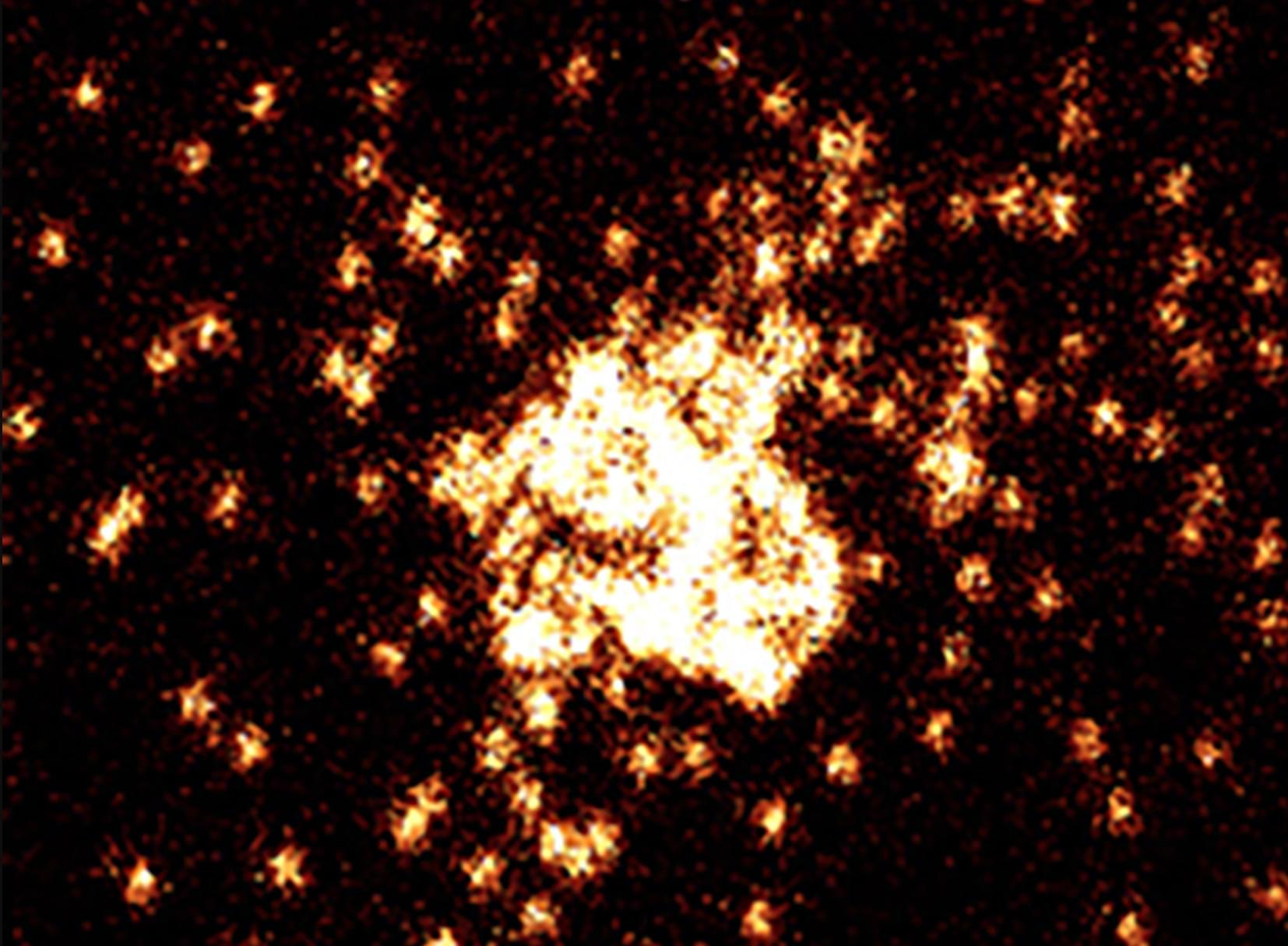We had to freeze ’em to see ’em.



A team of physicists has uncovered a surprising new way to explore one of science’s greatest challenges: uniting the two fundamental theories that explain how our universe works—Einstein’s theory of gravity and quantum mechanics.
Despite decades of effort, no one has fully explained how gravity—which governs massive objects like planets and stars—fits with quantum mechanics, which describes the behavior of the tiniest particles in the universe. But now, scientists believe light may hold the key.
Warner A. Miller, Ph.D., co-author and a professor in the Department of Physics at Florida Atlantic University’s Charles E. Schmidt College of Science in collaboration with scientists at the University of Seoul and Seoul National University, South Korea, found that light’s polarization —the direction it vibrates as it travels—can behave in an unexpected way when passing through curved space. Normally, this polarization shifts slightly due to the warping of space by gravity, a well-known effect.


MIT physicists have captured the first images of individual atoms freely interacting in space. The pictures reveal correlations among the “free-range” particles that until now were predicted but never directly observed. Their findings, appearing today in the journal Physical Review Letters, will help scientists visualize never-before-seen quantum phenomena in real space.
The images were taken using a technique developed by the team that first allows a cloud of atoms to move and interact freely. The researchers then turn on a lattice of light that briefly freezes the atoms in their tracks, and apply finely tuned lasers to quickly illuminate the suspended atoms, creating a picture of their positions before the atoms naturally dissipate.
The physicists applied the technique to visualize clouds of different types of atoms, and snapped a number of imaging firsts. The researchers directly observed atoms known as “bosons,” which bunched up in a quantum phenomenon to form a wave. They also captured atoms known as “fermions” in the act of pairing up in free space — a key mechanism that enables superconductivity.

The notion that the quantum realm somehow sits sealed off from the relativistic domain has captured popular imagination for decades. Perhaps this separation is comforting in a way, because it assigns neat boundaries to a notoriously complex theoretical landscape. Yet, a careful look at both cutting-edge research and historical development suggests that no such invisible barrier actually exists. Early quantum pioneers such as Planck (1901) and Heisenberg (1925) laid foundations that seemed confined to the minuscule domain of atoms and subatomic particles. Before long, Einstein (1916) showed us that gravity and motion operate in ways that defy purely Newtonian conceptions, especially at cosmic scales. Despite the apparent chasm between the quantum and relativistic descriptions, threads of continuity run deeper than we once imagined. The famous energy discretization proposed by Planck was intended to solve classical paradoxes at microscopic scales, but the fundamental constants he unveiled remain essential at any size, linking the behavior of infinitesimal systems to grand cosmic events.
Modern experiments push this continuity further into the mainstream conversation. Quantum coherences documented in biological processes illuminate the reality that phenomena once labeled “strictly quantum” can permeate living systems in everyday environments (Engel et al., 2007). Photosynthesizing cells exploit wave-like energy flows, migratory birds appear to navigate using subtle quantum effects, and intriguing evidence suggests that neuronal microtubules might process information at scales once deemed too large for quantum behavior (Hameroff, 1998). If relativity reliably predicts how massive objects curve spacetime, and quantum theory demonstrates how particles and fields manifest as discrete excitations, then the missing piece in unifying these perspectives may hinge on the realization that neither domain is airtight. We stand on a continuum of phenomena, from photosynthetic molecules absorbing photons to astrophysical bodies warping spacetime.

New theoretical research by Michael Wondrak, Walter van Suijlekom and Heino Falcke of Radboud University has shown that Stephen Hawking was right about black holes, although not completely. Due to Hawking radiation, black holes will eventually evaporate, but the event horizon is not as crucial as had been believed. Gravity and the curvature of spacetime cause this radiation too. This means that all large objects in the universe, like the remnants of stars, will eventually evaporate.
Using a clever combination of quantum physics and Einstein’s theory of gravity, Stephen Hawking argued that the spontaneous creation and annihilation of pairs of particles must occur near the event horizon (the point beyond which there is no escape from the gravitational force of a black hole).
A particle and its anti-particle are created very briefly from the quantum field, after which they immediately annihilate. But sometimes a particle falls into the black hole, and then the other particle can escape: Hawking radiation. According to Hawking, this would eventually result in the evaporation of black holes.

Axions, hypothetical subatomic particles that were first proposed by theoretical physicists in the late 1970s, remain among the most promising dark matter candidates. Physics theories suggest that the interactions between these particles and regular matter are extremely weak, which makes them very difficult to detect using conventional experimental set-ups.
The HAYSTAC (Haloscope at Yale Sensitive to Axion Cold Dark Matter) experiment is a research collaboration between Yale, Berkeley and Johns Hopkins, aimed at detecting axions by searching for the small electromagnetic signals that they could produce within a strong magnetic field.
In a recent paper published in Physical Review Letters, the HAYSTAC collaboration has reported the results of the broadest search for axions performed to date, utilizing a technique known as quantum squeezing, which is designed to reduce quantum noise (i.e., random fluctuations that adversely affect their haloscope’s measurements).


